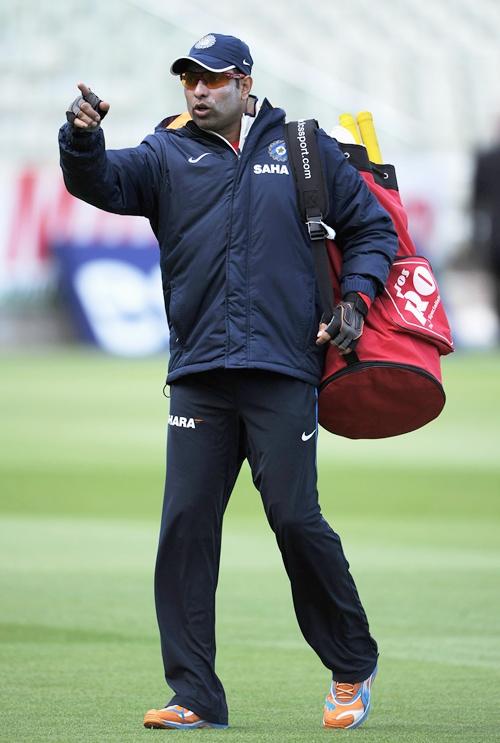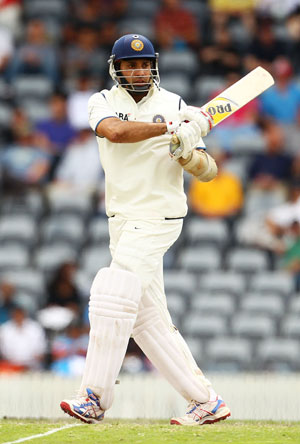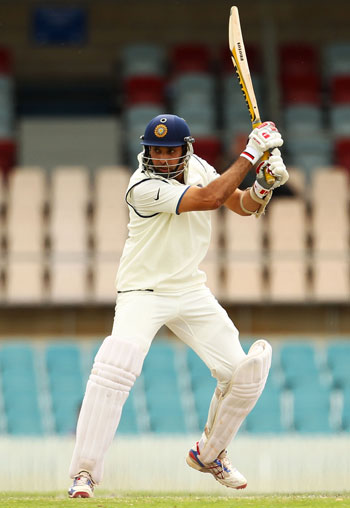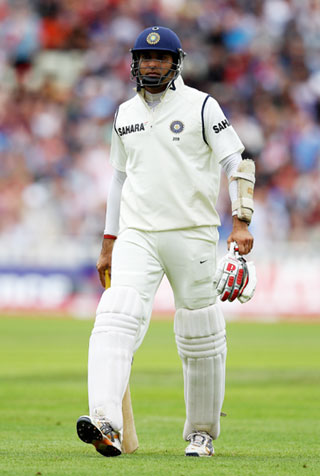VVS Laxman was the one of the last artists of the willow, writes Haresh Pandya
Cricket is not all about runs and wickets and catches. The beauty of the game lies in how you make runs, how you take wickets and how you hold or snap catches.
More than the number of runs, wickets and catches, it is the manner and the circumstances in which you excel in these three key departments that define your class, your greatness. What is the use plundering runs and claiming plenty of wickets against lowly sides but coming a cropper against champion teams?
More than the 8,781 runs at 45.97 in 225 innings of 134 Tests, it is the way he scored them and their immense value to Team India which made V.V.S. Laxman really very, very special.
In keeping with the legend behind his mythological name, he was truly India's savior in an hour of crisis. Not only did he make those runs beautifully; he produced brilliant innings when India needed them the most. If ever there was a thorough team-man in recent years, it was Laxman.
Laxman was a true heir to Gundappa Viswanath
In a game increasingly engulfed by the crass commercialism and loud music of the 21st century, Laxman was like a rare player in a symphony orchestra who sent the cognoscenti into raptures with his sweet melodies.
With him departs the last of the true artists of the willow and cricket will definitely be poorer for his absence. Many eyes must have been moist, especially those of connoisseurs, with the announcement of Laxman's retirement.
In many ways, Laxman was a true heir to Gundappa Viswanath in Indian cricket, not just as a batsman but also as a gentleman. He batted in much the same way Viswanath was famous for – artistically and stylishly.
And just like the original Little Master of Indian cricket, he always steered himself clear of controversies. By a remarkable coincidence, both Viswanath and Laxman usually excelled under pressure and on treacherous pitches.
'There was a Nawabi touch to Laxman's batting'
Though a simple, self-effacing soul, there was a Nawabi touch to Laxman's batting – all languid grace and lazy elegance. He hailed from the city of Nawabs and enhanced the rich legacy of M.L. Jaisimha and Mohammed Azharuddin who, too, were known for their artistry with the bat.
But unlike Jaisimha and Azharuddin, who were a bit vulnerable against genuine fast bowling, this humble Hyderabadi relished express pace. His attractive record against high quality speedsters on greentops speaks volumes for his prodigious talents.
What was more fascinating about Laxman was that he used the bat like a feather and not as a bludgeon and yet produced the same effect and result that a Virender Sehwag or a Chris Gayle do with their Big Berthas.
Unlike many forceful strikers of the ball, Laxman did not really have to hit the ball savagely for boundaries. He would simply caress the ball and send it to the ropes with his amazing wristwork, which was God's greatest gift to him.
It was Laxman who would rescue the side
In a middle-order already studded with gems like Sachin Tendulkar, Rahul Dravid and Sourav Ganguly, Laxman hardly got opportunities to bat up in the order. In fact, often he would not even get to bat at all in the second innings, usually in drawn Tests.
But when others failed, more often on difficult wickets and in adversity than on tracks tailor-made for batting and in favourable conditions and situations, it was Laxman who would rescue the side.
Much has been said, more written, about Laxman's heroic 281 at Eden Gardens in Kolkata in 2001, when he helped India win after being forced to follow on, and his 73 not out at Mohali in 2010, when he overcame a sore back and guided his team to a thrilling one-wicket triumph while batting with tailenders, both against Australia, but he had played a number of other outstanding innings. They either enabled India win or draw the Tests honourably.
India were 8 for 124 while chasing 216 at Mohali. But Laxman took the situation in his hand. He first added 81 runs with Ishant Sharma and then batted for those most crucial and nerve-wracking 20 minutes with No. 11 Pragyan Ojha.
During those tense moments, Ojha nearly got ran out trying to steal a non-existent single. It was then that one saw a rare sight – a furious Laxman abusing Ojha. But it was understandable and he duly took India home.
Australia invariably brought the best out of him
Close on the heels of his unconquered 73 came another memorable masterpiece from the famed Laxman brush – 96 in the second Test at Durban.
Though he had already top-scored (38) in the first innings on a bowler-friendly pitch, his 96 (during which he added 80-odd runs with the last three wickets) in the second was more important as it helped India set a target of 303 that South Africa fell short to achieve by 87 runs. India went one-up in the series.
It was a measure of Laxman's genius that except in the last series, Australia, decidedly the world's strongest team during his whole Test career, invariably brought the best out of him.
And Australia had the world's finest fast bowlers and spinners. Not only in Tests but even in some of the One-Day Internationals was Laxman at his best against the Aussies. His record against South Africa was not unimpressive either.
Laxman will always be spoken of in glowing terms
Given his large repertoire of shots, sense of improvisation, excellent timing and placement, Laxman was an ideal limited-overs batsman. And but for India possessing a very formidable batting line-up, Laxman would surely have played in all the World Cups between 1999 and 2011.
But there were better and more successful players and you really cannot blame the Indian selectors and captains of those years. However, Laxman will be remembered as one of the finest one-day batsmen as well.
It is, of course, as a classical Test batsman that Laxman will always be spoken of in glowing terms by those with a sense of art and aesthetic, beauty and poetry, perfection and style.
Like Viswanath, he was too rare a gem but never got the kind of recognition his sublime skills deserved. Maybe this is what happens when you happen to be a contemporary of the likes of Tendulkars and Dravids and such others. But this in no way should make Laxman less great. Nothing should.







Comment
article